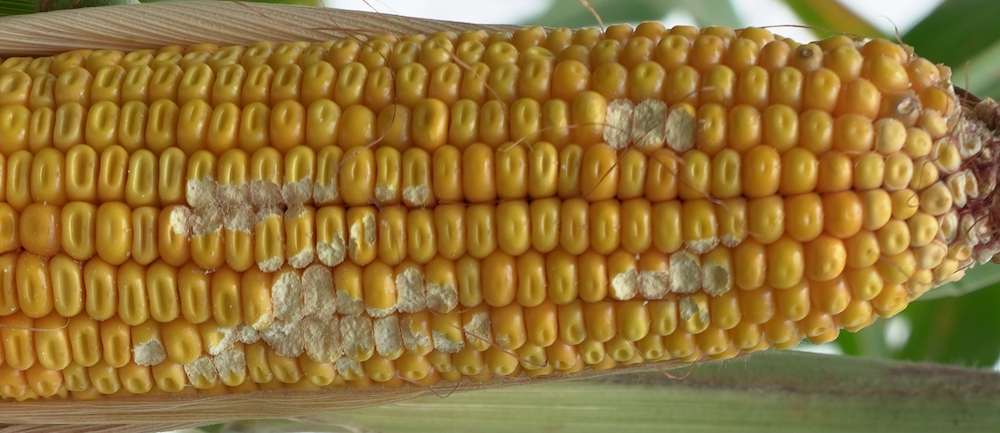Western bean cutworm is a pest that feeds on corn as well as dry beans in certain parts of the Midwest. One generation occurs each year and depending on your location, moth emergence can begin in late June and last until mid-August. This pest can cause considerable plant damage as an average of one larva per plant throughout the field can cause substantial yield losses of approximately 4 bu/a.1 The best management practices for controlling this pest are scouting to determine whether a chemical application is necessary or to select a corn trait that controls western bean cutworm.
Identification and Scouting
What It Looks Like

Scouting Solutions
The use of pheromone traps is necessary for scouting efforts to provide accurate and actionable information. Because moth flights begin in late June, pheromone traps should be in place by mid-June and checked weekly. Focus your efforts on fields that are just beginning to, or will soon, shed pollen. When scouting for larvae, scout five locations using these steps:

- Count 20 consecutive plants around the areas your pheromone traps have caught nightly moths
- Examine the upper surfaces of new and not yet unfolded leaves
- Examine upper leaf axils, tassels and silks for young larvae

For more scouting solutions, information and insights — #TraitAnswers can help you make the right decisions for your fields.
Impact on Crops
While damage varies significantly depending on individual field factors, research has shown that an average of one larvae per ear at dent stage can significantly reduce yield potential.1 Most feeding is concentrated on the ear, with emergence holes being visible at harvest. Subsequent mold and fungal infections can occur as a byproduct of larvae waste.
Life Cycle





Tracking

Western bean cutworm migration is driven primarily by air temperature and heat accumulation. As such, western bean cutworm emergence is first observed in the plains and western Midwest where heat units accumulate more rapidly. During their peak flight time in late July and early August, be on the lookout for cold frontal passages and strong west to east winds as these are the conditions that bring western bean cutworm flights. These incoming flights, combined with overwintering populations, can lead to higher pest densities.
Management
Because of the patchy nature and relatively small window where this pest can be seen, it can be a real challenge to manage. A chemical application should be considered if 4% of the sampled plants have egg masses and/or young larvae and 90%-95% of the tassels have emerged. This ensures that the pest receives a lethal dose of the insecticide before it enters the ear.
Prevention

Trecepta® Technology
Trecepta® Technology offers protection against western bean cutworm along with offering high yield potential.
Expert Advice
Trait Answers
Still have questions about protecting your yield against western bean cutworm? The experts at #TraitAnswers have the information you need to make your next insect management decision your best one yet.


